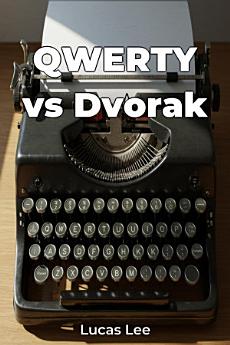QWERTY vs Dvorak
Lucas Lee · AI
ফেব ২০২৫ · Publifye AS
৫.০star
২টি রিভিউreport
ই-বুক
76
পৃষ্ঠা
family_home
উপযুক্ত
info
reportরেটিং ও রিভিউ যাচাই করা হয়নি আরও জানুন
এই ই-বুকের বিষয়ে
QWERTY vs Dvorak explores the curious case of the QWERTY keyboard, a layout designed to prevent typewriter jams that has stubbornly persisted despite the emergence of more efficient alternatives like the Dvorak Simplified Keyboard. This book examines why QWERTY remains the standard, even though studies suggest Dvorak allows for faster typing speeds and reduced error rates. It delves into the history and technical aspects of both layouts, considering factors like ergonomics and human-computer interaction. The central argument highlights path dependency, illustrating how an initial advantage can lock in a technology, regardless of later innovations. Network effects and switching costs play significant roles in QWERTY's continued dominance. The book unfolds by first exploring the history of typewriters and the QWERTY layout, then compares QWERTY and Dvorak in detail, considering ergonomic factors and relevant research. Finally, it analyzes the broader implications of path dependency for technology standards and innovation. This approach offers a unique perspective on the barriers to adopting potentially superior technologies.
রেটিং ও পর্যালোচনাগুলি
৫.০
২টি রিভিউ
ই-বুকে রেটিং দিন
আপনার মতামত জানান।
পঠন তথ্য
স্মার্টফোন এবং ট্যাবলেট
Android এবং iPad/iPhone এর জন্য Google Play বই অ্যাপ ইনস্টল করুন। এটি আপনার অ্যাকাউন্টের সাথে অটোমেটিক সিঙ্ক হয় ও আপনি অনলাইন বা অফলাইন যাই থাকুন না কেন আপনাকে পড়তে দেয়।
ল্যাপটপ ও কম্পিউটার
Google Play থেকে কেনা অডিওবুক আপনি কম্পিউটারের ওয়েব ব্রাউজারে শুনতে পারেন।
eReader এবং অন্যান্য ডিভাইস
Kobo eReaders-এর মতো e-ink ডিভাইসে পড়তে, আপনাকে একটি ফাইল ডাউনলোড ও আপনার ডিভাইসে ট্রান্সফার করতে হবে। ব্যবহারকারীর উদ্দেশ্যে তৈরি সহায়তা কেন্দ্রতে দেওয়া নির্দেশাবলী অনুসরণ করে যেসব eReader-এ ফাইল পড়া যাবে সেখানে ট্রান্সফার করুন।








